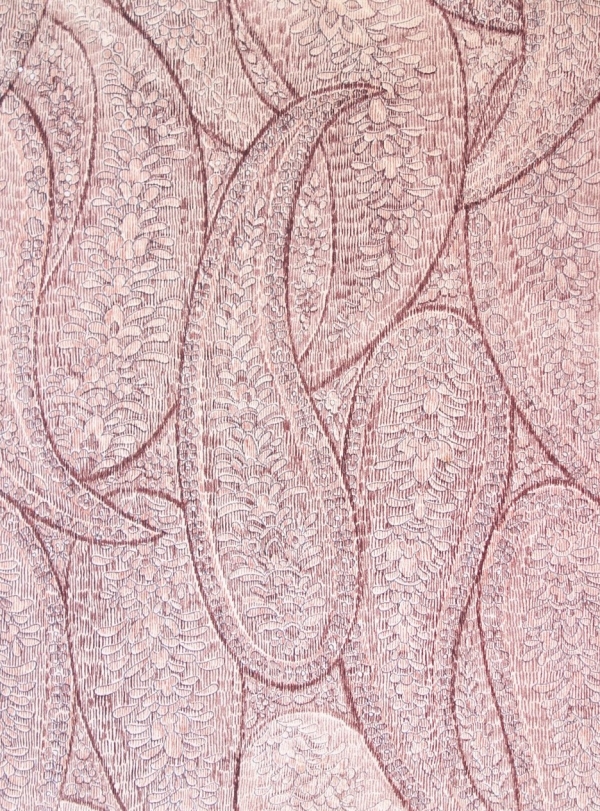The paisley motif is a curved, tear-shaped design, which has become a classic form used in many countries throughout the world. It has been described, for example, as a ‘particular form of floral design in which blossoms are contained within a cone shape’.
The origins of the motif are generally thought to lie in Iran, where it is known as the buteh (Farsi: flower bud, sprig, bunch of leaves), from where it would have been introduced in India and became particularly associated with Kashmir shawls.
The same motif, different names
The motif goes by many names, including buteh (with variations such as buta), mangga (Indonesia), or skoukyumoyo (‘pinecone’; Japan), but it is more widely known in the West by the name of paisley. This name derives from the Scottish town of Paisley (near Glasgow), where factory woven imitations of Kashmir shawls decorated with buteh were produced for much of the 19th century.
Iran: buteh
Afghanistan: Bota
India: In various Indian and related languages the word for this pattern refers to the word for the mango fruit:
- Bengali: kalka
- Hindi/Urdu: carrey, keril (‘flower’, ‘unripe mango’)
- Marathi: koyari (‘mango seed’)
- Punjabi: ambi (‘of the mango’)
- Tamil: mankolam (‘mango’)
- Telugu: mamidi pinde (‘young mango’)

- Han Chinese: huǒtuǐwén (‘ham hock’)
- Indonesia: buteh (with variations such as buta), mangga
- Japan: skoukyumoyo (‘pinecone’), magatama, or simply paisley
Western languages
- American quilters: ‘Persian pickle’
- France: boteh, cachemire, palme
- Italian: paisley, motivo cachemire
- Netherlands: 'paisley,' or 'buteh'
- Russian: огурцы (cucumber, or sometimes ‘Turkish cucumber’)
- Spain: estampado Bulgaro
- Welsh quilters: 'Welsh pear'


